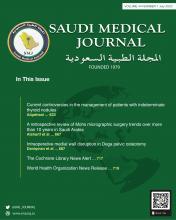JUNE 21, 2023 - Current treatments for AF—including medications and shocks to restore a regular heart rhythm—come with low success rates and/or serious side effects. In this new study, rats’ hearts were optogenetically modified to express light-gated ion channels. After AF was induced, the animals’ chests were illuminated resulting in acute restoration of regulation rhythm. This shows that sufficient light penetrated the chest wall, which suggests that full penetration of the human atrial wall may be feasible as well, if deemed necessary for clinical translation.
“Shock-free cardioversion of AF would allow restoration of regular rhythm at any place and time, which may improve the prognosis and quality of life of patients suffering from AF. We hope that our paper will contribute to the realization of this much desired option in clinical practice,” said corresponding author Daniël A. Pijnappels, PhD, of Leiden University Medical Center, in The Netherlands.
Link to Study: https://onlinelibrary.wiley.com/doi/10.1111/joim.13654
Full citation: “Light transmittance in human atrial tissue and transthoracic illumination in rats support translatability of optogenetic cardioversion of atrial fibrillation.” Emile C. A. Nyns, Vincent Portero, Shanliang Deng, Tianyi Jin, Niels Harlaar, Cindy I. Bart, Thomas J. van Brakel, Meindert Palmen, Jesper Hjortnaes, Arti A. Ramkisoensing, Guo Qi Zhang, René H. Poelma, Balázs Ördög, Antoine A. F. de Vries, Daniël A. Pijnappels. J Intern Med; Published Online: 21 June, 2023 (DOI: 10.1111/joim.13654).
Copyright © 2019 The Cochrane Collaboration. Published by John Wiley & Sons, Ltd., reproduced with permission.
- Copyright: © Saudi Medical Journal
This is an Open Access journal and articles published are distributed under the terms of the Creative Commons Attribution-NonCommercial License (CC BY-NC). Readers may copy, distribute, and display the work for non-commercial purposes with the proper citation of the original work.






